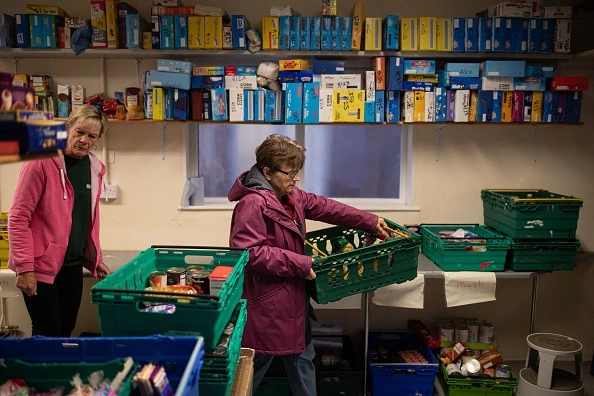
The Trussell Trust distributed almost three million emergency food parcels in the past year, the highest on record, and more than 750,000 people used a food bank for the first time, as the cost of living crisis saw hundreds of thousands of families struggle to put food on the table.

The number of parcels distributed by food banks in the Trussell Trust network between April 2022 and March 2023 was 37% higher than the previous year. It was 56% higher than in the year ending March 2020, before the pandemic began.
But even before the pandemic and the cost of living crisis, food bank usage was growing and has more than doubled since the end of 2018.
“An increasing number of people are left with no option but to turn to charitable, volunteer-run organisations to get by and this is not right,” said Emma Revie, Trussell Trust chief executive. “It is ongoing low levels of income and a social security system that isn’t fit for purpose that are forcing more people to access food banks, rather than just the recent cost of living crisis or the Covid-19 pandemic.
“Food banks were set up to provide short-term support to people in an emergency; they are not a lasting solution to hunger and poverty.”
The north-east of England saw the biggest year-on-year increase in food parcels distributed, with 154,400 distributed, 54% higher than the year before.
London, Yorkshire and Northern Ireland in comparison saw a smaller year-on-year increase of around a third, but both have seen parcel distribution up more than 80% since before the pandemic.
Birmingham is the local authority with the highest number of food bank parcels distributed, followed by Sheffield and Newcastle. Camden and Ealing are the highest in London.
Of local authorities that distributed more than 1,000 parcels, Great Yarmouth saw the biggest spike, with distribution going from 193 parcels in the year ending March 2022, to 5,727 last year. Mid Ulster also saw a large spike with distribution growing more than sevenfold.
Newham saw the biggest food bank demand spike in London, with distribution more than tripling year on year up to 4,059. Aberdeen also saw demand more than triple, from around 3,200 up to more than 10,600.
Mid Ulster also saw one of the highest rates of food bank distribution to children, with children making up half of all parcels given out.
“The staff and volunteers in our network are working tirelessly to ensure help continues to be available, but the current situation is not one they can solve alone,” said Revie.
“If we are to stop this continued growth and end the need for food banks, then the UK government must ensure that the standard allowance of universal credit is always enough to cover essential costs.”
[Read more: Period poverty: London has the highest proportion of girls struggling to afford menstrual products]






